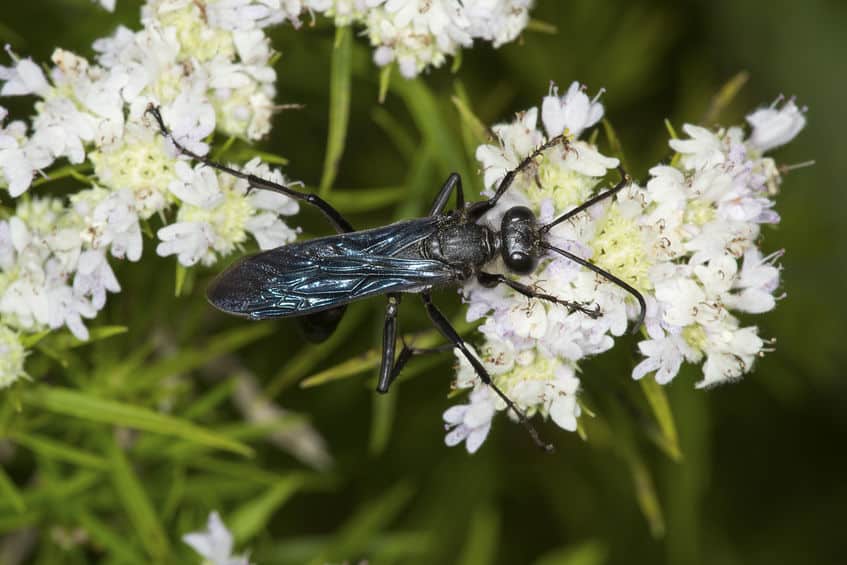The Great black wasp, phex pensylvanicu, is found across North America. A type of digger wasp it is about 1.5 inches (3.8 cm) in length.
Does the great black wasp have a painful sting?
Like a lot of other solitary wasp species, their sting has not evolved to be very painful to humans. The entomologist Justin Schmidt ranked them low on his insect pain index describing the sting as ‘Simple and presumptuous. Your younger sibling just nipped at your pinkie finger.’ Being solitary wasps they are very unlikely to sting a person. They do not have large colonies like social wasps.

What do great black wasps prey on?
They feed crickets and grasshoppers to their young to eat alive. First, they paralyze them with their sting before transporting them to their burrow. Once they have stocked their burrows full of crickets they will lay a single egg next to them before closing the burrow and camouflaging the entrance. Sealed inside the great black wasp larva will hatch and gradually consume the crickets alive. The wasp larva eats around the essential organs to keep the crickets alive for as long as possible, thus preventing them from decaying. They are very similar to the great golden digger wasp.
Do great black wasps pollinate?
The adults feed primarily on nectar and play an important role in pollinating plants such as milkweeds. Other than hunting on crickets to feed their larva they do not hunt insects for their own consumption. While bees may be more efficient pollinators than wasps the number of wasps is greater and so overall are vital for the propagation of plants. Read more.
Why are they considered useful pest controllers?
As they prey on crickets, grasshoppers, and katydids they are considered useful for containing the number of these insects. Crickets are often considered pests although they are more of a nuisance than genuine pests. Crickets inside the house can feed on clothes, but it is rare for them to enter a house.
Do any other insects harm great black wasps?
While they themselves parasite crickets by feeding them to their larvae alive, they also can fall victim to another species of parasites known as twisted wing insects that look like small flies. A study found that 7% of females and 25% of male great black wasps were victims of the parasite. Twisted wing insect larvae are tiny and will enter a host by releasing an enzyme that then allows them to penetrate through a section of the wasp’s abdomen. Secured inside the wasp they feed off nutrients in the wasp. As they grow inside the wasp’s abdomen they can take up to 90% of the space. When the male twisted wing insects are ready they break through the wasp’s abdomen killing the wasp. (source)
